TFB Armorer's Bench: Using RCBS' Ultrasonic Case Cleaner-2 for Brass

Welcome everyone to the TFB Armorer's Bench! Since summer is in full swing here in Minnesota, I've been able to accumulate some spent brass and put some quality time with the RCBS Ultrasonic Case Cleaner-2, and I wanted to share my real-world findings on brass cleaning specifically. We've already covered this unit's first impressions and cosmoline cleaning capabilities, but today we're diving into what RCBS markets as its primary function - cleaning brass cases. The question I kept hearing was simple: does it actually work better than traditional tumbling methods? Is that the point? Let's find out.
More TFB Armorer's Bench:
- TFB Armorer's Bench: RCBS Ultrasonic Case Cleaner 2 – A Closer Look
- TFB Armorer's Bench: Mounting an Optic on an X-Frame Revolver
- TFB Armorer's Bench: Diagnosing and Assessing a Winchester 94
- TFB Armorer's Bench: Diagnosing and Assessing a Colt 1877 Lightning
- TFB Armorer's Bench: By The Armorer Book – M1 Garand Maintenance
- TFB Armorer's Bench: How I Make Dummy Rounds
TFB Armorer's Bench: Using the RCBS Ultrasonic Case Cleaner-2 for Brass
Here, we at TFB hope to inform, entertain, and even inspire any would-be gunsmith or armorer out there. Ideally, with the information I provide and with the help of our sponsors, you can have some useful knowledge pertaining to the conservation and improvement of firearms technology while at the same time sharing experiences and teaching each other new tips and tricks along the way in the comments. Digging deep into what it is to be an armorer or gunsmith has significance but what is important is what those people do to show they’ve earned that title. I am happy to share my experiences and knowledge and hope it is informative!
Make your personal safety a priority:
- Practice proper gun safety. Always make sure before the firearm hits your bench that it is unloaded and safe to be handled.
- Wear the proper safety equipment. The main one would be safety glasses (decent ones) since parts are often under spring tension and you may work with high RPM tools. Other honorable mentions would be latex gloves or a respirator when working with potentially harmful solvents and oils. Also hearing protection when working with loud machinery or test-firing firearms.
- Modifications, alterations, and customizations will void your firearm’s warranty 9.5 times out of 10. Please take that into consideration before attempting any at-home gunsmithing.
- If you are unsure about proper safety practices, disassembly procedures, or warranty standards, stop, put down the tools, and consult a competent gunsmith.
My Testing Setup: RCBS Ultrasonic Case Cleaner-2
I wanted to give this thing a proper workout, so I gathered up a mix of brass that would test different aspects of the cleaning process. I grabbed a few handfuls of .223/5.56 cases (depriming 10 of them to see how well it handled primer pockets), some very old tarnished 30-30 brass, and a handful of 32-40 cases that had seen better days. The condition ranged from heavily tarnished old cases to dirty brass from suppressed shooting.
For the solution, I mixed about 30ml of the RCBS Case Cleaning Solution with my water. I cranked the temperature to maximum (140°F), but here's the pro tip: I added hot water initially and then splashed in some near-boiling water to skip the endless heating wait. In my experience, this thing takes forever to heat up even on a hot day in the shop.
I ran a couple of separate 30-minute cycles to really put it through its paces. No half-measures here.
The Results: Function Over Flash
Here's the bottom line that I hate to admit: my tumblers win this comparison. But that's not the whole story, and it's not necessarily a criticism of the RCBS unit.
The ultrasonic cleaner does exactly what RCBS claims - it cleans brass. If there's leftover gunk after a cycle, it's easily wipeable. The key insight is that this unit prioritizes function over form. As one source put it perfectly: ultrasonic cleaning "may not polish to a mirror shine like a tumbler—ultrasonic cleaning is about function, not flash."
What it does well: Cases that were relatively clean to start with came out looking great. The interior cleaning is solid, and if you're dealing with recently fired brass that just needs fouling removed, this method works efficiently.
Where it struggles: That old, deep tarnish - the stuff that's turned orange, brown, or tan over time - wasn't going anywhere. The ultrasonic action loosens contaminants but doesn't provide the abrasive action needed to remove heavy oxidation.
Primer Pockets and Interior Cleaning
The primer pocket cleaning deserves special mention. While grime tended to stick around initially, a quick swab or brush after the ultrasonic cycle removed everything in seconds. It's like the ultrasonic action loosened everything up perfectly for final removal.
Interior case cleaning showed similar results to the primer pockets. The ultrasonic waves do reach inside the cases effectively, but again, it's more about loosening debris than providing the aggressive cleaning action you get from stainless steel pins tumbling around inside.
Practical Considerations
Solution longevity: Based on my testing cycles, I'd estimate the cleaning solution lasting around 15 batches before turning into what I'd call "muddy soup." Compare that to stainless steel pins, which are essentially reusable forever.
Hands-on time: Once you set your time, temperature, and degassing function, you can walk away. It's pretty hands-off similar to tumbling, although you need to separate media afterward.
Noise and space: Don't let anyone fool you - this thing is just as loud and annoying as a tumbler, and it takes up a bigger footprint on your bench.
The heating issue: This remains my biggest complaint. Even though I have my hot water trick, the heating time is excessive. The temperature indicators help, but a little patience and pre planning can be required.
When Ultrasonic Makes Sense
After doing some research and testing, I can see where this method fits in a reloader's workflow:
Perfect for:
- Recently fired brass that just needs fouling removed
- Precision reloading where internal cleanliness matters more than appearance
- Situations where you want less mess than traditional tumbling
Skip it for:
- Heavily tarnished brass
- High-volume processing where cost per case matters
- You prefer that mirror-bright finish that makes brass look and feel truly clean
Conclusion: Using the RCBS Ultrasonic Case Cleaner-2 for Brass
I want to be clear, this unit works, and it does other jobs exceptionally well. For gun parts cleaning, it's fantastic. For brass, it delivers on its promise to clean, but it cleans in the same way it would clean gun parts. There's no magical tarnish removal that more abrasive cleaning methods provide.
For someone like me who reloads a lot of obsolete cartridges by necessity, it's not particularly useful for brass processing. I'd rather utilize its capacity and capability for gun cleaning operations. However, if you start with relatively clean brass and want to maintain that condition without the mess of tumbling, the Ultrasonic Case Cleaner-2 is an option.
The RCBS Ultrasonic Case Cleaner-2 excels at what it's designed to do - clean. Just understand that cleaning and polishing are two different things, and set your expectations accordingly. Sometimes function really is more important than flash.
As always, thank you for reading TFB! Be safe out there, have fun while shooting, and we will see you next time for the TFB Armorer's Bench! Also, let us know what you think in the comments below! We always appreciate your feedback.

Staff Writer: TheFirearmBlog & AllOutdoor.com | Certified Gunsmith | Published Author | Firearm History Enthusiast
More by Sam.S


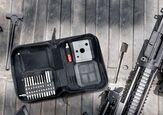


















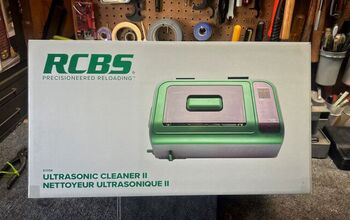


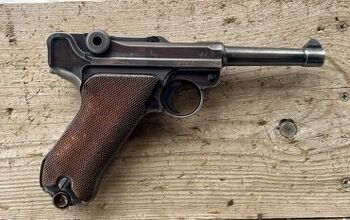


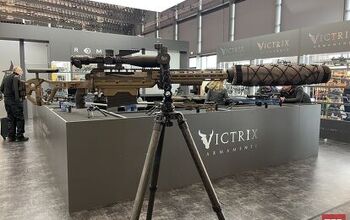
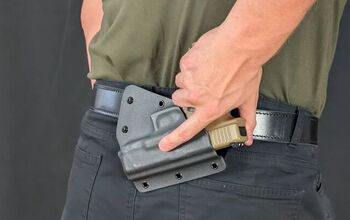
![[IDEF 2025] UPM 200 Heavy Machine Gun From Kazakhstan](https://cdn-fastly.thefirearmblog.com/media/2025/08/05/12361/idef-2025-upm-200-heavy-machine-gun-from-kazakhstan.jpg?size=350x220)

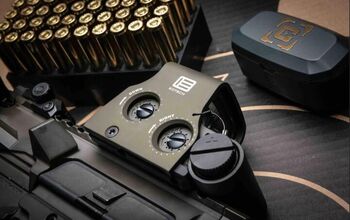
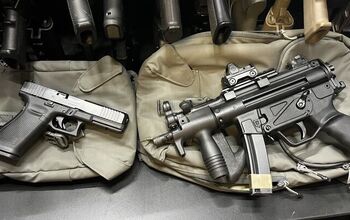



Comments
Join the conversation
Seems that tumbling with SS pins after ultrasonic treatment delivers both desired outcomes. Times and volume are sacrificed. Drying is calculated in. Doing a thousand cases takes many hours. Go figger😷
I’m still amazed at all the reloaders who de-primed their cases for cleaning, especially large volumes of 9mm cases, AND the same who hand-prime these cases.
IMNSHO, two unnecessary additions to the progressive reloading cycle. Wet tumbling adds another step: drying! And who gives a crap if the inside of your case is now shiny & clean.
Oh sure, when I deprime 45-70 cases on my single stage RockChucker press I do use the Lyman primer pocket reamer to clean the pocket….only because I want all that hot flame funnelled into the primer pocket hole in order to ignite 40 grains of powder. But I’m not firing a thousand rounds of 45/70 every year…….